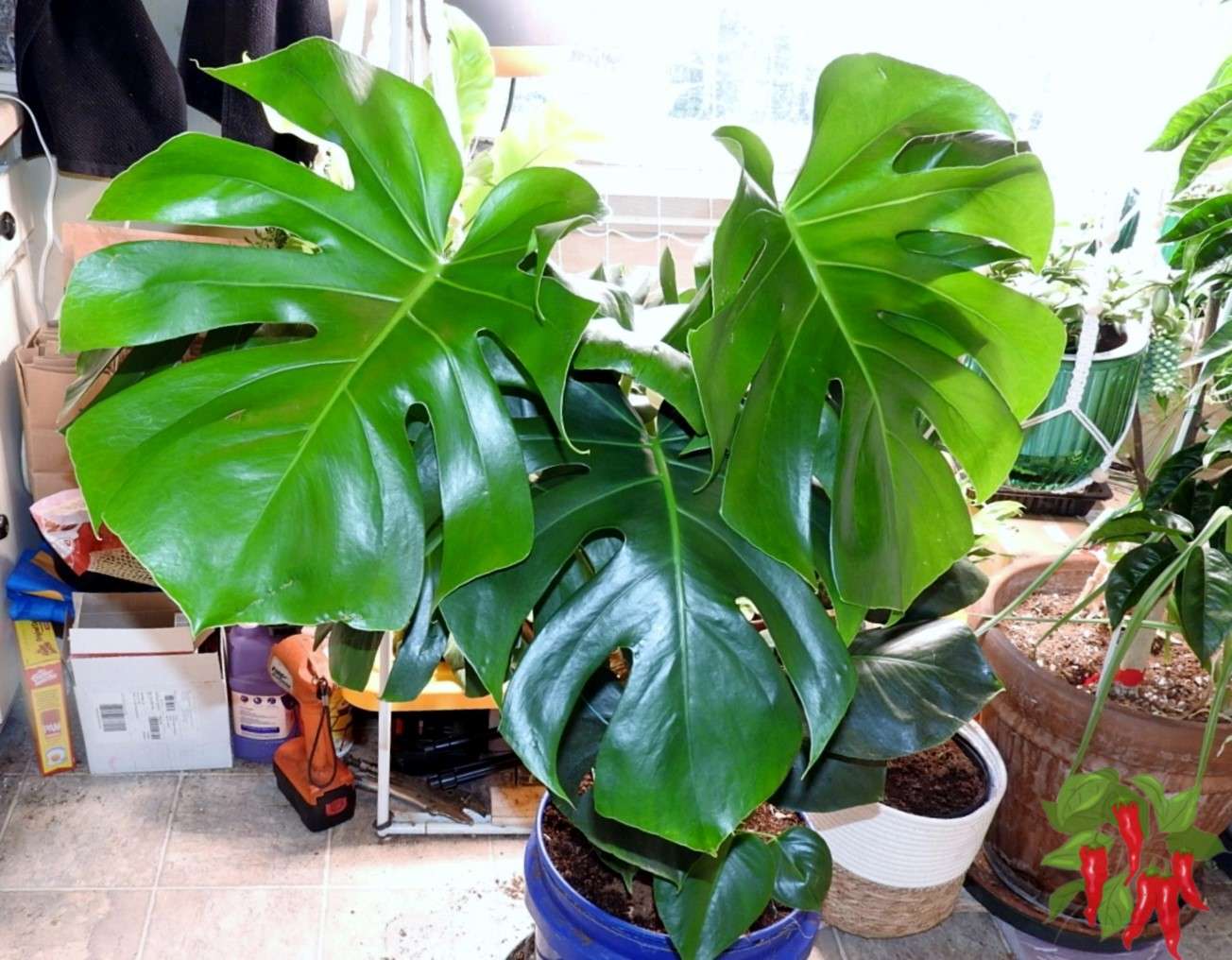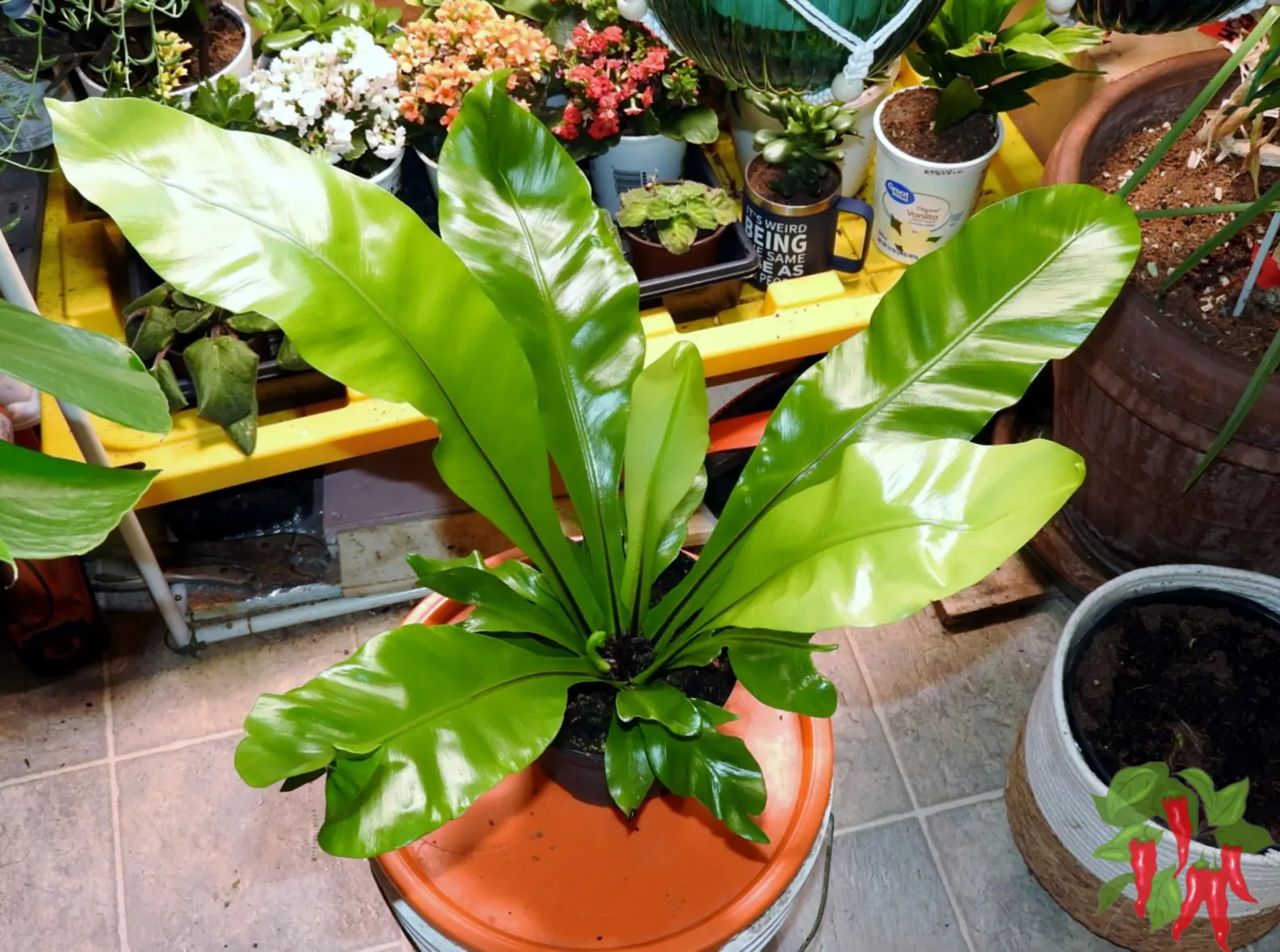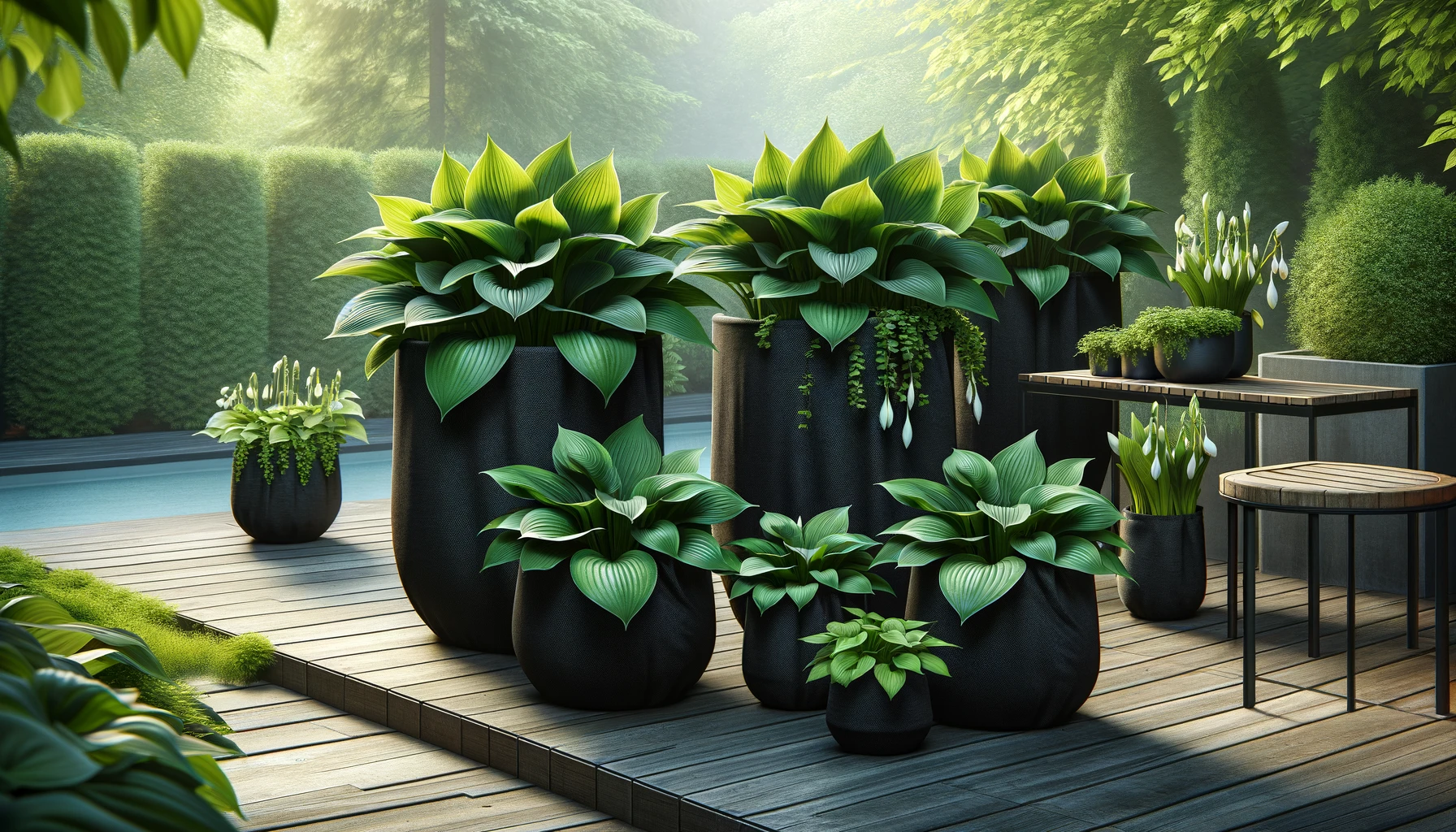
The Rattlesnake Plant (Calathea lancifolia) is a stunning, pet-safe houseplant with patterned leaves and purple undersides. Discover how to master Rattlesnake Plant indoor care with these essentials:
- Place in bright, indirect light (avoid direct sun)
- Water every 7–10 days, keeping soil lightly moist
- Maintain 50–70% humidity with misting or pebble trays
- Use rich, well-draining soil with added perlite
- Repot every 1–2 years and divide to propagate
With the right care, your Rattlesnake Plant will reward you with vibrant foliage and long-lasting indoor beauty.
If you’re curious about adding a bold, exotic houseplant to your space, the Rattlesnake Plant won’t disappoint.
In this guide, you’ll discover everything you need to know about Rattlesnake Plant indoor care, from light and watering needs to soil, humidity, and repotting tips, so your Calathea lancifolia thrives beautifully in your home.
Rattlesnake plants are beautiful, exotic houseplants that make a great addition to any indoor garden and they are easy to care for.

American Plant Exchange Calathea Rattlesnake – 6-Inch with Pot Cover – Live Pet-Friendly Indoor Houseplant with Wavy Green Leaves for Low-Light Homes, Offices, Bedrooms & Shelf Décor
This plant is native to Brazil and can be found in tropical rainforests.
Rattlesnake Plants are characterized by their long lance-like leaves.
The leaves have purple undersides and alternating dark green leaf-shaped stripes on a lighter green leaf.
One interesting thing about Rattlesnake Plant (Calathea lancifolia) is that like the prayer plant the leaves fold together at night and unfold again in the morning.
Rattlesnake plant Calathea lancifolia has recently been scientifically renamed Goeppertia insignis.
If you’re thinking about adding one to your home, read on for some tips on Rattlesnake Plants.
How To Grow Rattlesnake Plant In A Nutshell

Rattlesnake Calathea Live Plant – Air Purifier, Colorful House Plant, Ideal for Home Decor and Room Decor – Rattlesnake for Indoor Plants, Calathea Lancifolia Prayer Plant
1. Rattlesnake plants are easy to care for and make great additions to any home.
2. They need bright indirect light but can tolerate lower light levels too. However, their markings may fade in really low light conditions.
3. Water them regularly, ensuring the soil is always moist but not wet. Don’t overwater them as it can cause root rot.
4. Fertilize them once a month with a balanced plant food
5. Repot them into a larger pot once they’ve outgrown their current one
Rattlesnake Plant Care Reference Guide
| Characteristic | Details |
|---|---|
| Common Name | Rattlesnake Plant |
| Botanical Name | Calathea lancifolia (Goeppertia insignis) |
| Native Habitat | Brazilian tropical rainforests |
| Plant Type | Evergreen perennial houseplant |
| Growth Pattern | Clumping, upright foliage with patterned leaves |
| Mature Size | Up to 30 inches tall and wide |
| Watering | Keep soil consistently moist; water every 7–10 days, avoid soggy roots |
| Light/Sun Exposure | Bright, indirect light; tolerates low light but avoid direct sun |
| Soil Type | Rich, well-draining mix with peat/coco coir and perlite |
| Soil pH | Slightly acidic to neutral (6.0–7.0) |
| Temperature | 60–85°F (15–29°C); avoid below 60°F |
| Humidity | High (50–70%); misting or pebble trays recommended |
| Bloom Time & Flower Color | Rare indoors; small, inconspicuous yellowish flowers |
| Potential Problems | Leaf curl, browning tips, fading patterns, root rot from overwatering |
| Repotting | Every 1–2 years; refresh soil and divide clumps if desired |
| Hardiness Zones (USDA) | 10–12 (grown indoors elsewhere) |
Rattlesnake Plant Indoor Care

Want more information on caring for your rattlesnake plant? Here is everything you need to know about providing the best growing conditions, propagating, soil, watering, and more.
Rattlesnake Plant Sunlight
Rattlesnake plants (Calathea spp.) are beautiful, low-maintenance houseplants that are easy to care for.
One of the most important requirements for rattlesnake plants is the right amount of light.
They grow naturally on the shady rainforest floor so they prefer bright indirect light. They do not receive bright sunlight there.
Some plants are more sensitive to light than others. The Rattlesnake plant will suffer scorch marks if they’re exposed to too much sun or even bright indirect lighting from a south-facing window.
An east or north-facing window would be a perfect spot for your Rattlesnake plant.
The leaf pattern on the Rattlesnakes will begin to fade if they are exposed to too much light or not enough.
How Often To Water Rattlesnake Plant
Watering your rattlesnake plant (Calathea Lancifolia) correctly is crucial to keeping it healthy and preventing root rot.
The watering schedule will vary depending on the season and the level of humidity in your home, but as a general rule, you should water your rattlesnake plant every 7-10 days.
Allow the top 2-3 inches of soil to dry out before watering, and then water thoroughly until water runs out the bottom of the pot.
Be sure to empty any drip tray after watering, as sitting water can lead to root rot.
Rattlesnake Plant Humidity
These plants thrive in moist environments and prefer high humidity levels. They prefer a humidity range of 50-70%.
Along with low to indirect light preferences, these plants require high humidity to mimic their natural habitat . Some calatheas are placed in bathrooms, kitchens, and other areas with high-moisture levels. Calatheas prefer temperatures 60°F / 15°C and above to support healthy growth. These plants are also sensitive to cold air. The ideal temperatures range for these plants is 75°F / 23°C to 85°F / 29°C. https://en.wikipedia.org/wiki/Calathea
If indoor humidity is low or you live in a dry climate you can try placing your plant on a pebble tray or you can mist your plant daily with lukewarm water.
A pebble tray is simply a tray filled with pebbles to which water is added. You don’t want the bottom of your plant’s pot to actually sit in the water.
Rattlesnake Plant temperature
Rattlesnake plants (Calathea spp.) are native to tropical and subtropical regions of Central and South America.
Rattlesnake plants prefer warm, humid climates and bright indirect light.
The optimum temperature for rattlesnake plants is between 60 and 85 degrees Fahrenheit. Don’t let the temperature go below 60°.
When the temperature gets too cold, the leaves of the plant will begin to drop off and plants may be permanently damaged.
Rattlesnake Plant Soil
Rattlesnake plant soil should be rich in organic matter and well-draining.
The soil should also be kept evenly moist, but not soggy. When watering, be sure to avoid getting water on the leaves, as this can cause brown spots.
In addition, rattlesnake plants prefer high humidity levels, so misting the leaves occasionally can be beneficial.
This plant can be grown in any commercial potting mix or in coco coir.
I see recommendations for adding sand to the mix are fairly popular. Don’t do it. Don’t use cactus or succulent soil either.
Sand is heavy and can compact and make drainage slower. Instead to lighten a potting mix add perlite, LECA, or growstones.
Fertilizing Rattlesnake Plant
Rattlesnake plants benefit from being fertilized every few weeks during the growing season.
High-quality, all-purpose plant food will do the trick. Be sure to follow the manufacturer’s instructions, as too much fertilizer can burn the roots of your rattlesnake plant.
Rattlesnake Plant Repotting
You will probably need to repot your rattlesnake plant every year or two. You will want to have fresh potting mix on hand.
This is also the perfect time to divide your plant if you want to propagate your rattlesnake plant.
You will want a pot that is only an inch or two larger around than the previous one.
Add some soil to the bottom and place your plant inside. You will fill in around the sides with more soil.
You don’t want your plant to sit any deeper than it did before. You can hold the plant up as you fill in around it to control its final height.
Finally, water your plant thoroughly to settle the potting mix and remove any air pockets.
How To Propagate Rattlesnake Plant
Propagating rattlesnake plants is relatively easy and can be done through division.
The best time to do this is when you are repotting your Calathea.
When division is used, the plant is simply divided into two or more sections, each with its own root system.
Use fresh potting mix in a pot slightly larger than your root ball and plant it at the same depth that it was growing in before.
Propagating rattlesnake plants is a great way to create new plants without having to purchase them from a nursery.
Pruning Rattlesnake Plant
Though rattlesnake plants do not typically need pruning you should remove any dead or damaged leaves as needed.
This will help the plant provide energy for new growth instead of trying to heal damaged leaves that wont recover.
Is Rattlesnake Plant Toxic?
The plant gets its name from the markings on its leaves, which resemble those of a rattlesnake.
Despite its name, the rattlesnake plant is not toxic to humans or pets.
According to the American Society for the Prevention of Cruelty to Animals (ASPCA), Rattlesnake Plant is non-toxic to dogs, cats, and horses. Calathea | ASPCA
However, it is important to keep this plant out of reach of children and pets, as it can cause mild stomach upset if ingested.
Rattlesnake Plant FAQs:
Embracing the charm of Rattlesnake Plants comes with a flurry of inquiries on ensuring healthy growth indoors.
Below are some common questions along with comprehensive answers to guide you in nurturing this exotic beauty.
Q. How do I maintain the vibrant leaf patterns on my Rattlesnake Plant?
A. Ensure your plant receives bright indirect light, as too much or too little light can cause the leaf pattern to fade. An east or north-facing window is ideal.
Q. What’s the ideal watering routine for a Rattlesnake Plant?
A. Water every 7-10 days, allowing the top 2-3 inches of soil to dry out between watering sessions.
Over-watering or letting it sit in water can lead to root rot.
Q. How can I increase humidity for my Rattlesnake Plant, especially in dry climates?
A. Place your plant on a pebble tray filled with water or mist the plant daily with lukewarm water to boost humidity around it.
Q. Are Rattlesnake Plants toxic to pets or humans?
A. No, Rattlesnake Plants are non-toxic to humans, dogs, cats, and horses, although it’s wise to keep them out of reach to avoid any possible stomach upset if ingested.
Rattlesnake Plant Indoor Care Final Thoughts
We hope you found this blog post on Rattlesnake Plant indoor care helpful!
Rattlesnake Plants make a great addition to any indoor garden. With proper care, they will thrive and provide you with years of enjoyment.
If you’re looking for an interesting and exotic houseplant to care for, the Rattlesnake Plant is a great option.
Caring For Rattlesnake Plants Tips:
- For thriving Rattlesnake Plants indoors, provide bright indirect light.
- Keep them away from direct sunlight to avoid leaf scorch.
- Water every 7-10 days, ensuring the top 2-3 inches of soil dry out between watering.
- Favor a humid environment, with temperatures between 60 and 85°F.
- Fertilize monthly with balanced plant food during the growing season.
- Repot annually or biennially using a well-draining, organic-rich potting mix.
Remember to keep your Rattlesnake Plant in a warm, humid environment with bright, indirect light.
Use a natural, organic fertilizer that’s low in nitrogen.
With a little bit of love and attention, your Rattlesnake Plant will thrive indoors. Happy gardening!
🌿 Indoor Houseplant Growing Guides
Want to fill your home with lush, vibrant greenery? These expert indoor houseplant guides will help you grow everything from exotic blooms to hardy foliage with ease!
- 🌿 Benefits of Keeping Indoor Houseplants (Pillar Guide)
- 🌱 Can You Grow Gladiolus Indoors? 11 Easy Gladioli Growth Tips
- 🍃 Pink Wandering Jew: Easy Nanouk Tradescantia Care
- 🌾 Tī Plant Care Indoors: 7 Proven Tips To Transform Your Space
- 🪴 Rubber Plant Care Indoors: 11 Best Care Tips For Beginners
- 🍀 Ficus Benjamina Indoors: 6 Easy Growth Tips For Beginners
- 🌼 How To Care For Peace Lily Indoors: 13 Easy Care Growth Tips
- 🌹 Bubble Gum Plant Care: 11 Tips And Tricks For Beginners
- 🌺 Hibiscus Plant Care Indoors: 7 Growth Tips For Beginners
- 🍂 Growing Jacob’s Ladder Indoors: Comprehensive Guide
- 🌷 Purple Shamrock Plant Care: 13 Tips And Tricks For Beginners
- 🌿 Creeping Jenny In Pots: 13 Lysimachia nummularia Growth Tips
- 🏡 Vertical Gardening Ideas: Best Small Space Garden Ideas
- 🪴 Chinese Money Plant Care Indoors: 7 Easy Growth Tips
- 🌳 9 Triangle Ficus Care Secrets for a Lush, Healthy Plant
- 🍌 Ice Cream Banana Tree Care: 15 Tip Complete Growth Guide
- 🌱 How to Make a Nerve Plant Thrive: 10 Tips and Tricks
- 🌸 African Violet Care Indoors: 11 Easy Care Tips For Beginners
- 🌺 Alternanthera Party Time Care: 7 Easy Growth Hacks
- 🌼 Geranium Care In Pots: 9 Geranium Growth Tips For Beginners
- 🌿 Purple Velvet Plant Care: 7 Easy Growth Tips And Tricks
- See all articles in our Indoor Houseplants category










 Steve S. is the creator of
Steve S. is the creator of